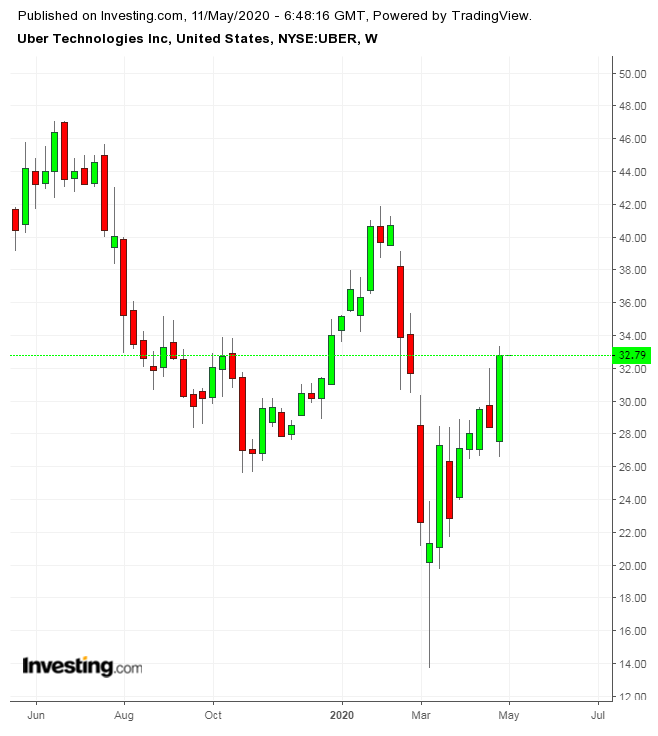The world’s largest ride-sharing company, Uber Technologies (NYSE:UBER) has produced an incredible rally since hitting the March lows.

Shares of the San Francisco-based company are up about 140% since then. After recovering from the coronavirus-induced plunge, they’re now up 10% for the year, outperforming the benchmark S&P 500 which remains down on the year.
On the face of it, there isn’t much to cheer about. Uber's ride-hailing services came to a standstill globally as countries shut city after city in an effort to curb the spread of COVID-19 which has so far infected more than four million people worldwide.
The impact of this health crisis was visible in the company’s first-quarter earnings report, released on Thursday. Among the metrics: Uber said its ride-hailing business was down about 80% in April.
That unprecedented drop produced a net loss of $2.94 billion on sales of $3.54 billion in the three months ended March 31. That's compared to a net loss of $1.09 billion and sales of $3.1 billion a year earlier.
The larger decline includes $2.1 billion in pretax write-downs on some of Uber’s investments that have lost value because of the coronavirus crisis. Analysts surveyed by FactSet had expected a $1.38 billion net loss on sales of $3.53 billion for the quarter just ended.
Despite this dismal performance, investors are finding solace in CEO Dara Khosrowshahi’s plan to deal with this crisis. They also see signs that the worst is likely over for the company.
Cost-Cutting Drive
During the past week, Uber announced a series of cost-trimming moves, including ending food delivery operations in more than half a dozen countries and cutting about a third of its workforce in its Middle East, Careem, unit. On Wednesday, the company told Uber employees it was laying-off 14% of staff and indicated that more cost reductions would be conveyed in the next two weeks. The CEO also said he'd be forgoing his salary for the rest of the year.
Uber, which has never turned an adjusted quarterly profit—and is unlikely to do so this year—now expects to hit that milestone next year, thanks to its cost saving measures that will eliminate more than $1 billion in expenses.
With the cost restructuring accelerating, Uber’s diversification to the food delivery business in profitable locations is thriving as more and more people are ordering online when restaurants are closed. Gross bookings for Uber Eats surged 52% from last year’s first quarter to $4.68 billion in Q1 2020.
“While our rides business has been hit hard by the ongoing pandemic, we have taken quick action to preserve the strength of our balance sheet, focus additional resources on Uber Eats, and prepare us for any recovery scenario,” Mr. Khosrowshahi said in a statement.
That spike in the food delivery unit isn’t temporary, according to some analysts, who believe Eats could provide a permanent boost to Uber.
“Thanks to diversification, Uber’s revenue declines will be less severe than they otherwise would be if the company were a ride-hailing pure-play,” Piper Sandler analyst Alexander Potter said in a note.
“We expect this trend to continue, and although Uber Eats remains less profitable than ride-hailing, we think the food delivery business could experience structural, permanent, and largely favorable changes due to COVID-19.”
Bottom Line
Uber is among those new economy companies showing resilience in this recession. Investors are betting that Uber’s timely cost-cutting drive and the diversification of its business will provide the resilience it needs to emerge strongly post-coronavirus.
